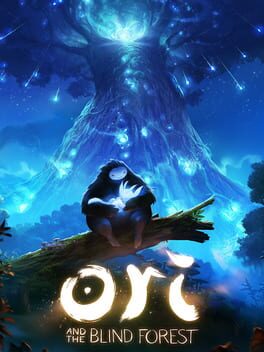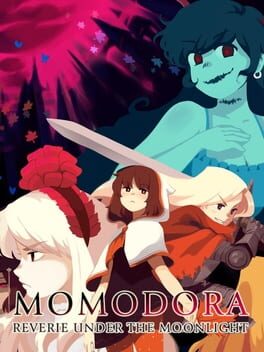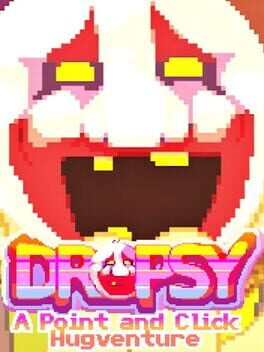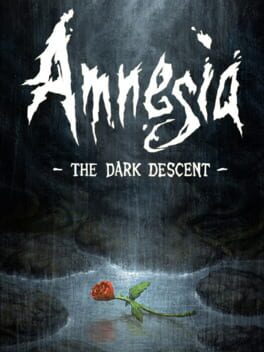RatJacko
Bio
Nothing here!
Badges

4 Years of Service
Being part of the Backloggd community for 4 years

N00b
Played 100+ games
108
Total Games Played
000
Played in 2024
003
Games Backloggd
Recently Played See More
Recently Reviewed See More
Ori and the Blind Forest is a game that gives off every impression of a game you should like. I genuinely thought I did like it in fact, until I found myself four hours in craving an ending for the mere hope of not playing anymore. I just need to get past this sequence, I told myself. I don't like these timed jumping puzzles. Well, I don't actually enjoy the vast majority of the platforming, most of which is centered around cheap instakills and spikes of death, or slow-moving floating beam traversal. Well that's okay - it's an art game! I'm playing for the story then. Well, not really - it's a cheap sentimental ploy at bambi-level natural purity kitsch that pits you against an uncomplicated "darkness" threatening to destroy the natural sanctity of the forest. Not exactly cutting-edge writing. But hey, it's a visual medium, so why not let the environment tell the story? Well, I wish it would, but what starts out as an beautifully illustrated forest with smoothly integrated platforming paths quickly becomes a bric-a-brac construction of nicely detailed but uninspired assets right out of the Crash Bandicoot guide to environmental theming. The forest isn't believable as a locale because its layout is littered with Metroidvania standbys of 2-Dimensional map design and it progresses through your typical Forest-world, Fire-World, Cave-World area sequences. Plus, the bioluminescence gimmick, while theoretically cool and unique, is so overdone that it actually makes the game difficult to play. Enemies and enemy projectiles are all the same kind of glowy bloom as the background, foreground, the player character, the player character's attacks, and many of the platforms, making everything blend together visually and actually obscuring important information. So wait, what am I actually playing this game for? The animations are nice I guess.
That was more or less my experience of this game, which really did hoodwink me into thinking that I was playing something wonderful, if I just ignored a few excusable design flaws. But the more I thought about it, the more I realized that the design flaws were emblematic of, not exceptional to, the game itself. What is left when you realize that you're not playing the game for its story, its gameplay, its art, or its theming? Completionism? Clout? Because this game bears all the superficial signifiers of a bona fide "Art Game" but is functionally indistinguishable from a bad Mario clone? If only there were a word for a game that pretends to be something much greater than it is - pretend-tious, maybe?
Anyway, this might be the first game that ever gaslit me into believing it was good until I actually realized that I did not have any fun playing it and was actually just hoping to eventually understand the art behind its art design, so that's something.
That was more or less my experience of this game, which really did hoodwink me into thinking that I was playing something wonderful, if I just ignored a few excusable design flaws. But the more I thought about it, the more I realized that the design flaws were emblematic of, not exceptional to, the game itself. What is left when you realize that you're not playing the game for its story, its gameplay, its art, or its theming? Completionism? Clout? Because this game bears all the superficial signifiers of a bona fide "Art Game" but is functionally indistinguishable from a bad Mario clone? If only there were a word for a game that pretends to be something much greater than it is - pretend-tious, maybe?
Anyway, this might be the first game that ever gaslit me into believing it was good until I actually realized that I did not have any fun playing it and was actually just hoping to eventually understand the art behind its art design, so that's something.
A really interesting take on the puzzle platform that places perception of space over a logical understanding of how space works. A lot of what is fun about this game is the gradual learning of and adjustment to the hidden rules of its reality - how do floors, doors, and walls work? What can I do with these cubes? Okay, what can I really do with these cubes? Wait, there's even more I can do with these god damn cubes?
That being said, the moment the aforementioned cubes are introduced is also the moment the game loses a lot of its experimental brilliance and becomes more of a standard logic puzzler than a hyperbolic illogic puzzler. What keeps the game fresh is that you're constantly finding different ways to manipulate the blocks that are basically currency for the various locks in the game, and each new thing you learn how to do opens up a world of new possibilities for manipulating the movable environment.
The ending feels suitably reality-bending and is a great test of what you've learned thus far. Combine the outside-of-the-box gameplay with some refreshingly clean aesthetics and a validation system of progress screens that apply existential aphorisms to the successes and failures of the puzzles, and you've got one hell of a memorable game.
Fans of Portal and The Witness will want to check this one out.
That being said, the moment the aforementioned cubes are introduced is also the moment the game loses a lot of its experimental brilliance and becomes more of a standard logic puzzler than a hyperbolic illogic puzzler. What keeps the game fresh is that you're constantly finding different ways to manipulate the blocks that are basically currency for the various locks in the game, and each new thing you learn how to do opens up a world of new possibilities for manipulating the movable environment.
The ending feels suitably reality-bending and is a great test of what you've learned thus far. Combine the outside-of-the-box gameplay with some refreshingly clean aesthetics and a validation system of progress screens that apply existential aphorisms to the successes and failures of the puzzles, and you've got one hell of a memorable game.
Fans of Portal and The Witness will want to check this one out.
This is actually a smaller, simpler game than its monumental reputation would have you believe. It has some excellent atmosphere reminiscent of a darker, more Lovecraft-inflected Myst, and the physics puzzles are minimal enough to not get wonky and distracting. The spook factor of the game is a little diminished by the fact that the monster AI is abysmally stupid, and they don't spawn consistently when you die and try again, so avoiding them feels more like a process of rolling the dice than skill-rewarding gameplay. Weirdly enough, I liked the full-on horror aspects the least, and the more brooding, atmospheric elements the most. I was pleasantly surprised to find that monster-avoiding was more of an occasional set piece rather than a full-on mechanic, as that was easily my least favorite part of the game and its sparing use made it easier to get immersed in exploration of the hauntingly designed castle.
Oh, and it must be said, the voice acting injects some humor into the game that was entirely unexpected and very out of place. Meeting Agrippa was harrowing at first and hilarious the second he started talking.
Oh, and it must be said, the voice acting injects some humor into the game that was entirely unexpected and very out of place. Meeting Agrippa was harrowing at first and hilarious the second he started talking.






